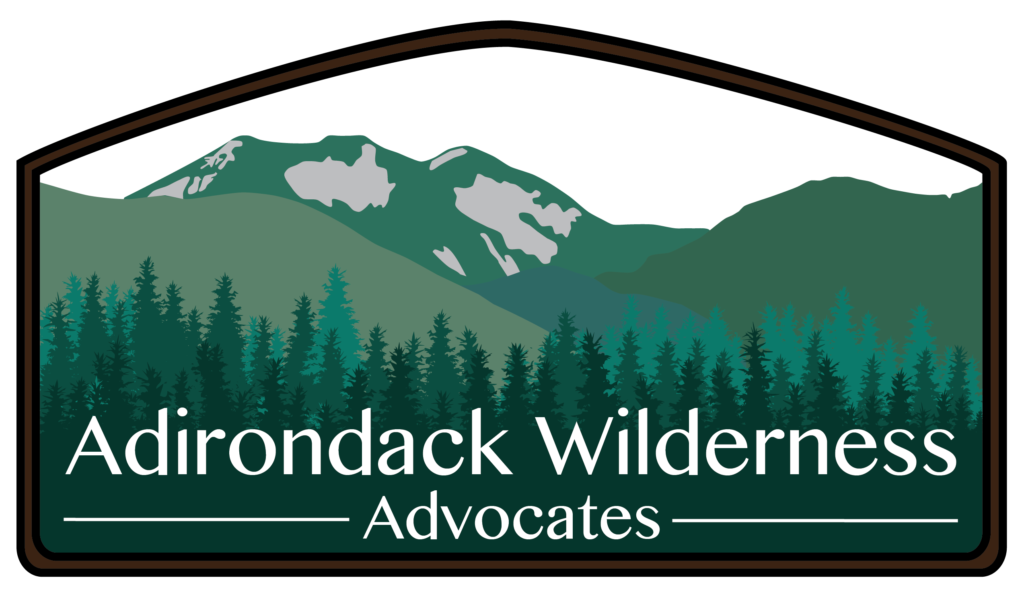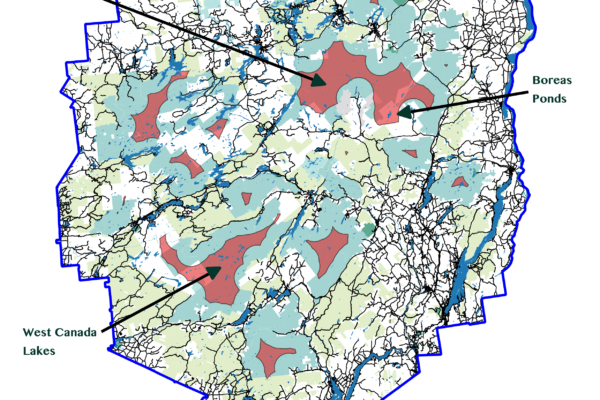It has taken me many moons to develop my thoughts on the Boreas Ponds Tract, a large parcel of land within the Adirondack Park that was recently purchased by New York State. I am fortunate to have a good group of friends who provoke me to think and imagine, will test my preconceived notions, and will hold respectful, engaging conversations on challenging topics. I am thankful to have the time to think about a complex issue like the classification of the Boreas Ponds Tract, which is likely to be the last large parcel of property to enter the Adirondack Park in my lifetime, and what different management decisions will entail. I am certain that my capacity to hold such opinions would only have formed with the repeat exposure to the topic and intellectual stimulation from a supportive group of friends. I am grateful for the sharing of concepts, ideas, experiences, beliefs, and knowledge. I fully believe big decisions like those of land management, that start now and go into eternity should do the same. I believe that they should be drawn out instead of rushed, with all alternatives considered, because the resultant management decisions will carry on indefinitely. It is wonderful to have a group of people who I can bounce ideas off of, learn from, people who will share resources and references. I want to extend that offer to you, as a friend and a resource to think deeper, to think about tough problems, and to work together to solve them.
A Flawed Process
It took me a while to think about Boreas Ponds in context, as a contiguous piece of Wilderness, adjoining two other Wilderness areas, I didn’t have sufficient information from the land managers, I had to dig for it. Boreas Ponds is pending classification by the land governing agency of the Adirondack Park, the Adirondack Park Agency (APA). The APA has the responsibility of designating the types of use permitted on all public lands within the Park. Originally 3 options were on the table for Boreas, each of which were incredibly similar. Those three options allowed motorized use up to or around a pond in one of the most remote parts of the Park. It appeared the Adirondack Park Agency was not willing to consider a full range of management options. About 100 parcels of land are in the process of being classified or reclassified this year. All but Boreas had a preferred outcome for classification, essentially what the Agency deemed the new lands to be, and a supporting document detailing why. Boreas on the other hand, was put on the table with no preferred alternative for classification, and an incomplete Environmental Impact Statement which should have told us what the land should be treated as. The Agency went to public hearings and a public comment period to ‘learn’ what it should already know and be telling the public about the property, not the other way around. We should have been presented with all sorts of information from an accurate inventory of roads to wildlife.
Engaging in the land classification public process has been an enlivening activity. I have learned a lot about other peoples values and thought processes. It is interesting to learn back stories, inter-workings, and past relationships. It is freeing to speak to the ethics and values you believe in, and rewarding to hear and understand others.
Its taken a lot of time, and background knowledge, hours of scouring research daily for the past few months to think about what is going on. Getting involved was not for the faint of heart, I had to dive head first into this one! Prior to actively engaging in a public comment process, I had thought the APA was doing all they could to properly protect the lands, waters and all of their inhabitants within the Park. In following the entire public process, I’ve been able to read between the lines, make inferences and connections, understand relationships, and how the decision making processes of land classification have changed throughout the years. I had negligently supposed that huge doctrines like the State Land Master Plan would be used to a T, and unobjectionably so by the powers that be. It has become abundantly clear that these processes need to be watchdogged. Peoples motivations need to be observed and even watchdogs might need watchdogging in sensitive decision making processes like these. To me it is now more resolute that someone needs to ring the bell, and be the crier to make others aware of what is going on.
A Challenge to Think Differently
In context of the Boreas Ponds Tract, I propose the following thoughts to you. I fully extend a challenge to all that can to think beyond the context of an existing road system, an existing concrete dam, and artificially flooded wetlands. I extend a challenge to you to think of this piece of land beyond its boundaries, and recognize it as the link between two existing Wilderness areas. I challenge you to imagine a landscape scale addition to the Forest Preserve as the following: a conduit to two Wilderness areas; a contiguous unit from lower elevation hardwoods right through the charismatic alpine summits seen over the ponds; a quiet place where the sounds of motorized and mechanized activities are prohibited in accordance with mandated protection of this piece of land and all of its inhabitants; a place where the intangible sense of remoteness is retained, not destroyed, a place to recover from the scars of humanity over the centuries.
If you cannot imagine this land healing itself, with or without human assistance, simply reflect on the healing natural forces taking place on previously designated Wilderness areas within the Park. Nearly everywhere we have traveled within the confines of the Park has been criss-crossed by roads, logged, burnt, depleted, inhabited, manicured, and subsequently abandoned. I urge you all to imagine what a full Wilderness classification for the Boreas Ponds Tract would mean. If this issue compels you, I then encourage you to engage me, your friends, your family, your network in conversation to do all that we can to protect it. Stay engaged and challenge yourself!
Please consider taking 30-seconds to send a letter to New York State in support of a full Wilderness classification for Boreas Ponds. Public comment will be accepted through December 30th, 2016.



